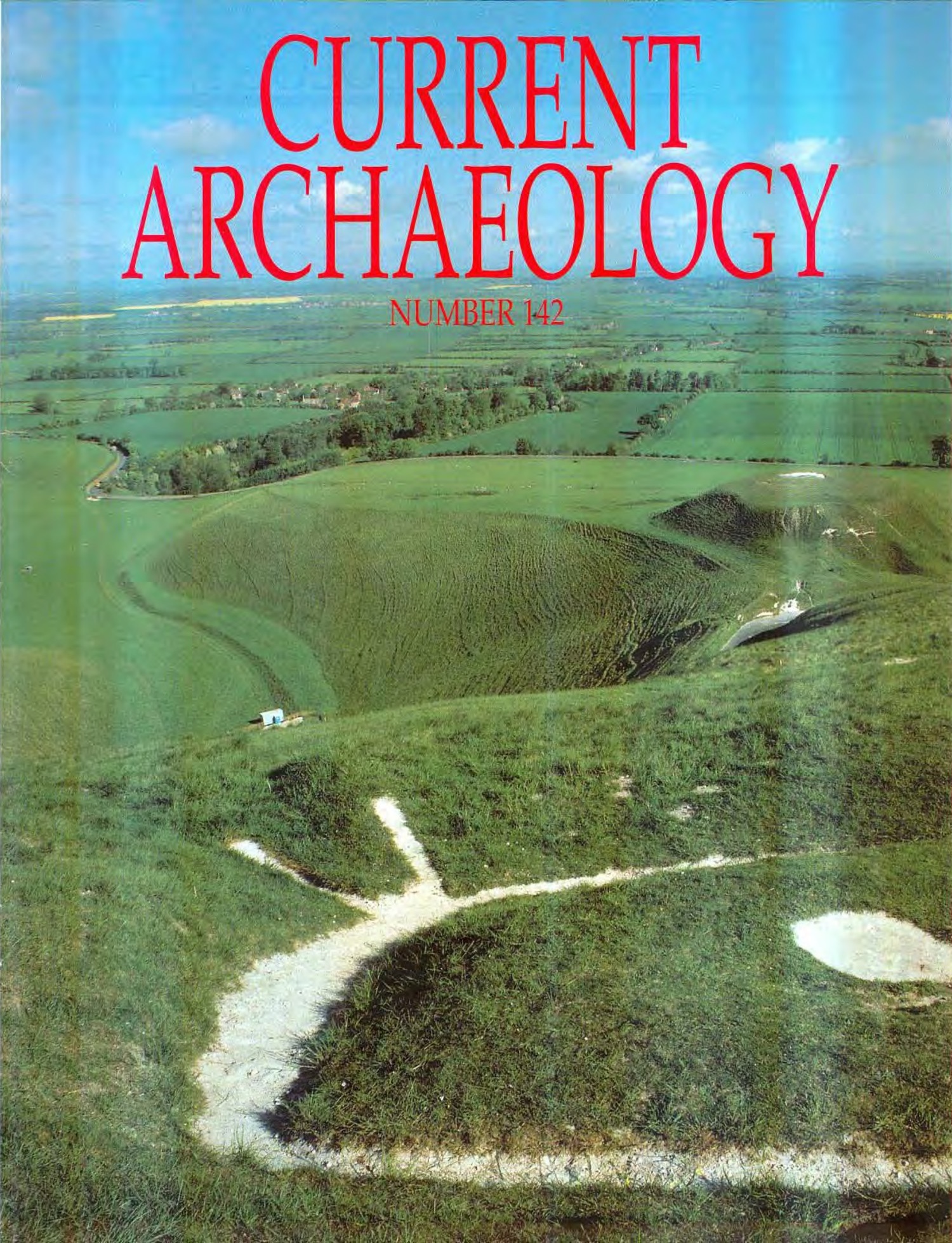The past has been jinxed. The Council of Europe has proclaimed that this is the Year of the Bronze Age and Lo and behold! all the articles that are coming in deal with the Bronze Age. We are doing our best to keep our usual balance, but be warned: we have several more Bronze Age articles in stock.
A good example of this jinx is to be seen in our first article on the White Horse. This, as we all know, is a prime example of Celtic art, carved into the hillside in Berkshire and scoured white from time immemorial. David Miles has been investigating and the Oxford Laboratory has come up with some new dates based on the new technique of silt dating, which suggest that the White Horse is Bronze Age. Which do you believe? Do you believe in science? Or do you believe that such an obvious example of Celtic Art could not possibly date to the Bronze Age?
And then we turn to the Orkneys where, as you know, there are large numbers of Neolithic chamber tombs. At Linga Fold, Jane Downes has been excavating Orcadian tombs, but these are not Neolithic but Bronze Age. And what’s all this about a mortuary chapel?
Escaping from the Bronze Age, we arrive at Hereford Cathedral and yet more burials. Following the controversy over the proposed sale of the Mappa Mundi, a new building was to be erected to display their treasures and it was thought that there might possibly be a few burials for excavation. In the event they discovered over a thousand – to say nothing of the charnel pit from the building of the Norman cathedral. We even indulge in some Old Straight Trackery. Alfred Watkins, inventor of ley lines (whom all true archaeologists condemn) lived in Hereford, and the site lies on one of his predictions: did it come true?
On the morning of 14th October 1645, Oliver Cromwell and his troops stormed Old Basing House and put the defenders to the sword. One of the defenders has just been recovered with a sword mark across his skull. David AlIen and Alan Turton have the gory details.
Finally in Archaeology in Pictures, we give instructions on How to Pen up your Kids; the discovery of Tower Harratz at Bristol; and finally, for our foreign offering, we fail to get to Timbucktoo but we reach its next door neighbour Gao, where a fine hoard of hippopotamus ivory has been discovered.

